Dogs come in all shapes and sizes – and coats. Short-haired dogs are a lot like little boys with buzz cuts: Just wipe them off with a wet washcloth, and they’re good to go. But anything beyond that basic smooth coat takes a little bit more care, and it starts with having the right tools. Here’s what you need to know:
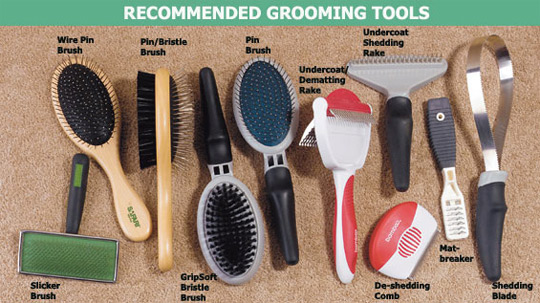
- Bristle brushes: Bristle brushes, with their natural or synthetic bristles, look just like human brushes. They’re best for short-haired or smooth-coated dogs.
- Pin brushes: These brushes look a lot like human brushes, too, but the “bristles” are actually little plastic or metal pins. Some of them even have tiny balls on the end of each pin to protect your dog’s skin. While these brushes aren’t very good at untangling knots and removing mats, they’re great for general grooming and do a fantastic job of smoothing the coats of long-haired and double-coated dogs.
-
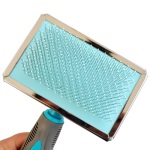
Pet Slicker Brush Slicker brushes: Like pin brushes, slicker brushes are made with pins, most of which have the same little balls on the end. But these pins are curved and are usually packed more tightly. They’re intended to work through long, thick, or curly hair and to reach down to the skin. You can also use them on short-haired dogs, as long as you’re careful not to scratch the skin.
- Detangling combs: These combs do just what the name says: They help remove mats and tangles. For severely matted hair, you can even get a comb that includes a series of blades that will cut right through mats.
-
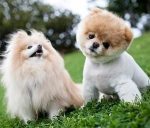
I am groomed! Shedding tools: Most dogs shed some, but some shed a lot, up to and including “blowing” their coat once or twice a year. Shedding tools can speed up the process and get the loose hair where you want it – in one pile on the floor – instead of spread all over your carpets, clothes, and furniture. A stripping blade, for instance, is designed to extract a loose undercoat, leaving the outer coat intact. Shedding blades, on the other hand, do just the opposite: They remove the outer coat while leaving the undercoat in place. The right one depends on the breed of your dog and the way in which they shed.
-
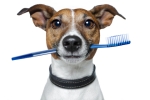
Do I need to brush my teeth? – picture credited by Linderman Animal Hospital. Oral care tools: A lot of pet parents never think about their pet’s teeth, even when they get a whiff of doggy breath! But dogs’ teeth need cleaning just like ours do (although, fortunately, not as often), because dirty teeth can lead to infection. The best strategy is prevention, brushing your dog’s teeth with a special toothbrush (most fit over the end of a finger) and toothpaste. If your dog objects, you might have more luck doing it while he’s in a stroller or carrier, secured with the leash attachment. If your dog’s teeth are severely caked with plaque, your dentist can take care of it for you, although your dog will need to be sedated or put under general anesthesia. Some dog treats and toys are also advertised as dental aids and can help keep your dog’s teeth clean.
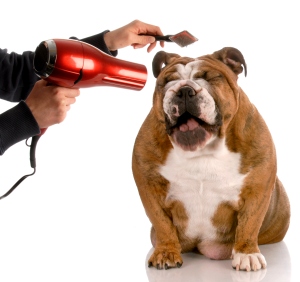
Whether you’ve got a smooth-coated rat terrier or a poodle with a show cut, there are tools designed just for your dog’s grooming needs. Help your dog stay happy, healthy, and gorgeous with regular care and grooming.
For most updated IBIYAYA information, please visit our website at http://www.ibiyaya.com
Connect with us through social media:



